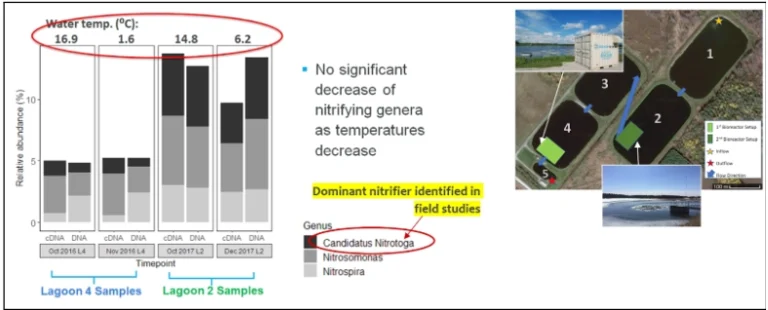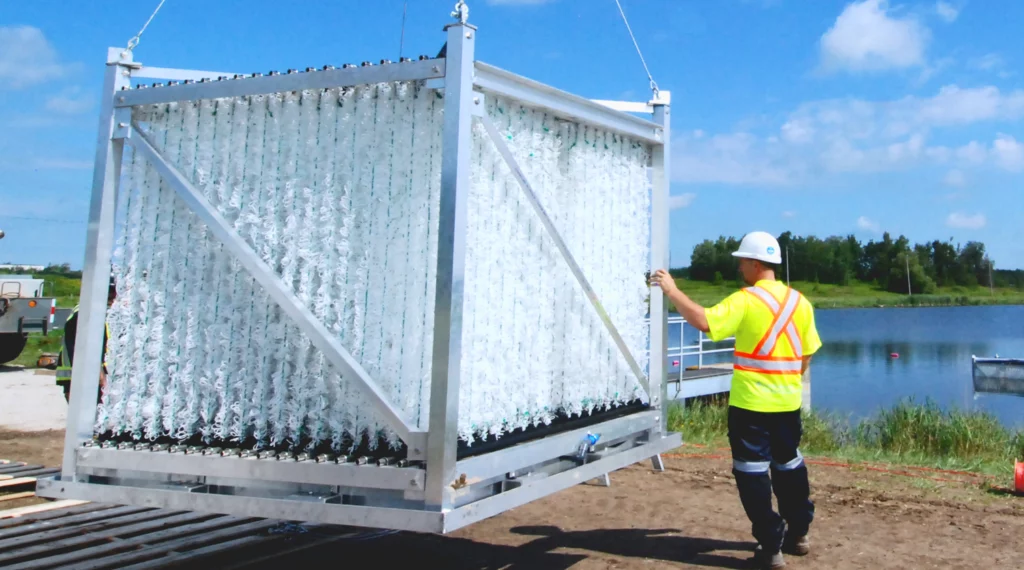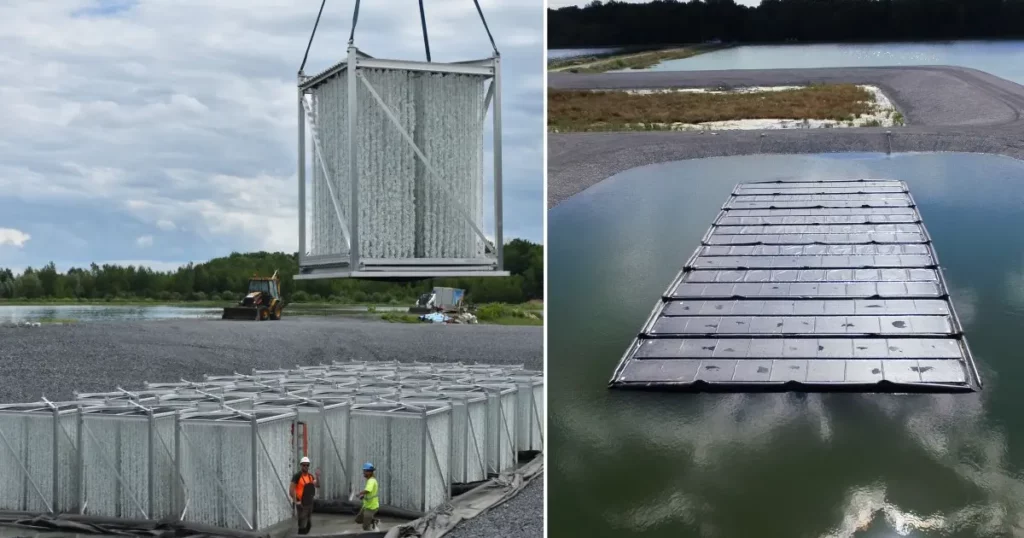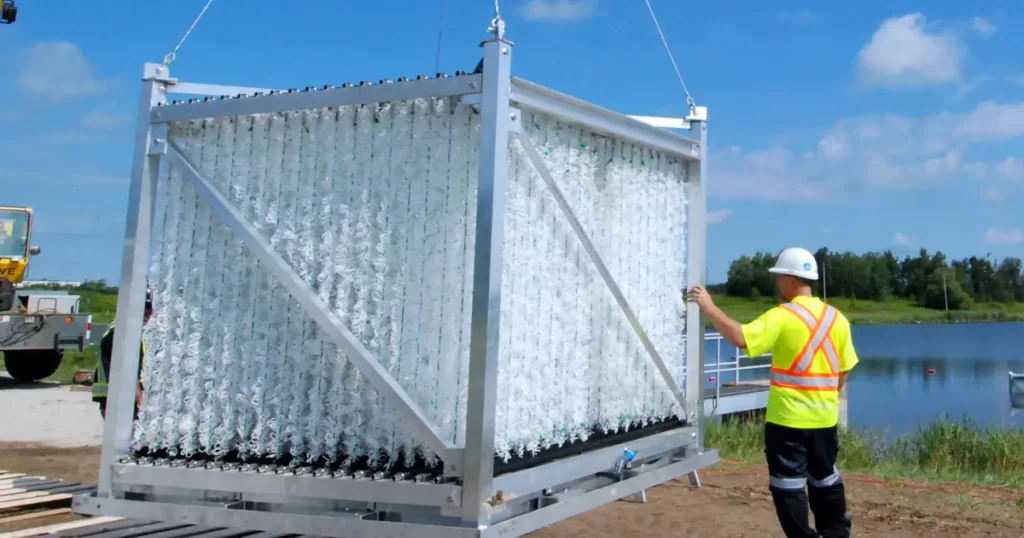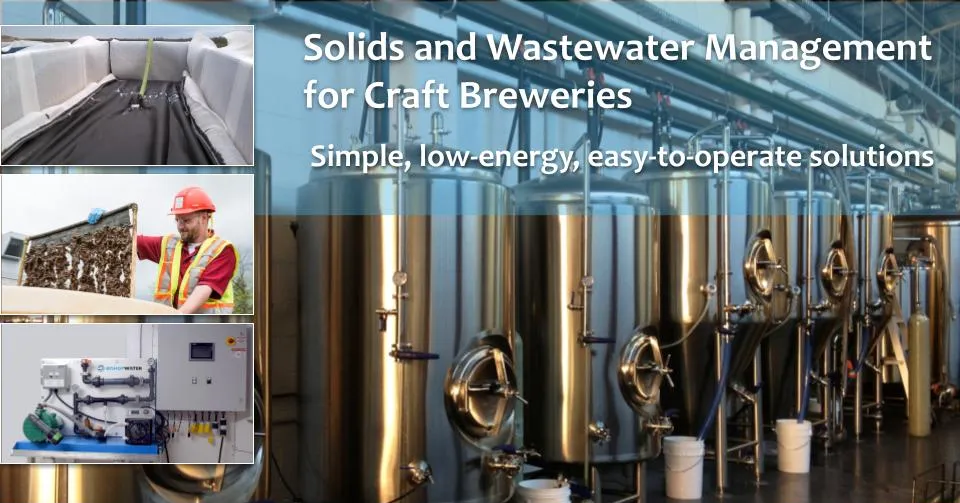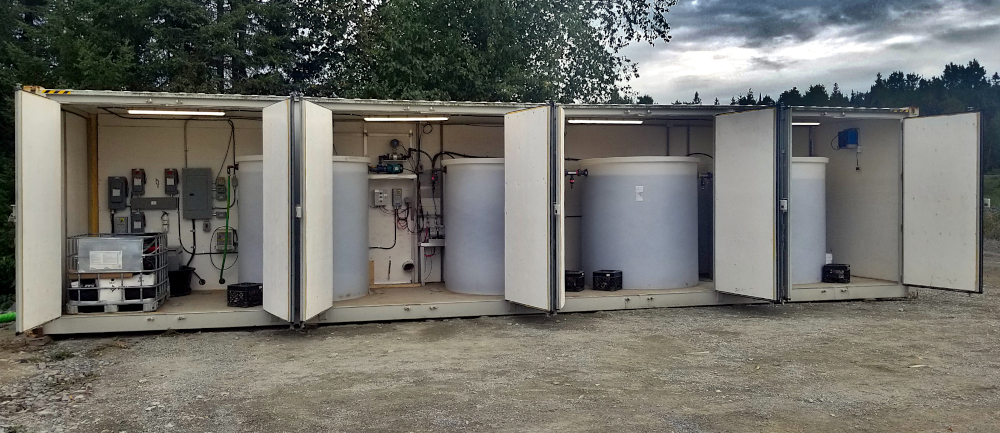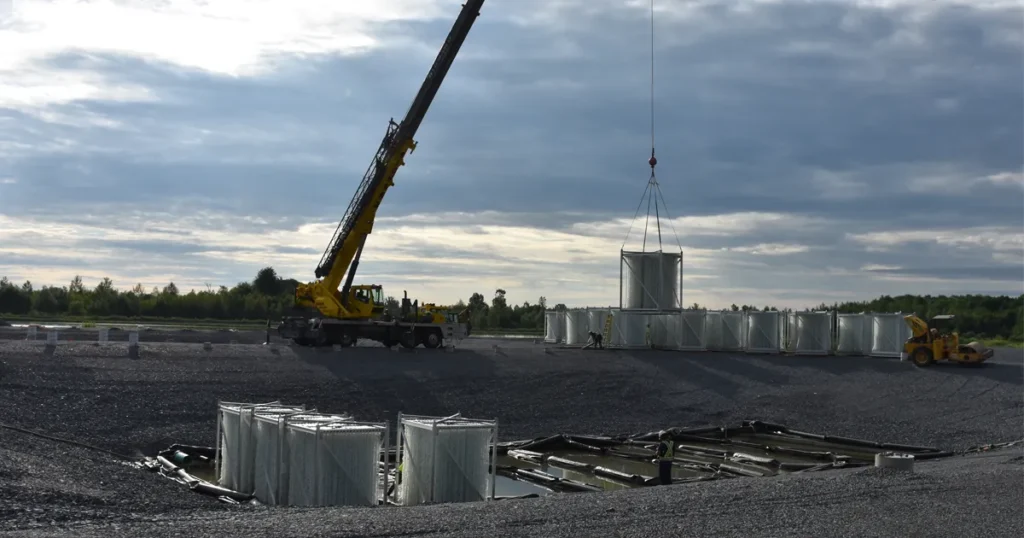
ARTICLE
Beyond bioaugmentation: BioCord Reactors for winter nitrification
Are you facing challenges with ammonia removal during colder months?
Bioaugmentation is commonly attempted to improve nitrification and ammonia removal in wastewater lagoons during the winter. However, this approach is often only a short-term solution since nitrifying bacteria are very sensitive to cold temperature. As a result, ammonia removal can experience a significant drop when the water temperature reaches about 15°C and can stop entirely at 5°C or less. Once the water reaches cold temperatures, continuing to add bioaugmentation products is unlikely to provide sustained ammonia removal in an ordinary wastewater lagoon.
Build the ideal home for cold-tolerant nitrifying bacteria
BioCord Reactors are like condominiums for bacteria, providing a massive surface area and the ideal conditions to establish and maintain a robust, cold-tolerant biofilm. This simple, low-energy system offers a permanent solution in providing a simple and permanent way to establish cold-tolerant communities of nitrifying bacteria.
BioCord Reactors incorporate a customizable, modular design that rises up through the water column. The reactor frame supports densely arranged loops of polymer fibres that provide a massive surface area – or “home” – on which preferred, naturally occurring bacteria can thrive. Once the bacteria becomes established as a biofilm, the system can respond to changes in nutrient loading to maintain nitrification for ammonia removal, even when the wastewater temperature is near freezing.
Performance data demonstrates BioCord’s ability to remove ammonia and BOD in cold weather conditions. One example was seen during a pilot project in St. Henry, Ohio, where BioCord Reactors responded to increasing ammonia loading (red line), while water temperatures dropped down to almost 0°C (dotted black line). Bacteria in ordinary wastewater lagoons are unable to Supregulate in response to higher nutrient loading. However, this example shows increased activity in the BioCord biofilm and effective ammonia removal in cold water conditions.
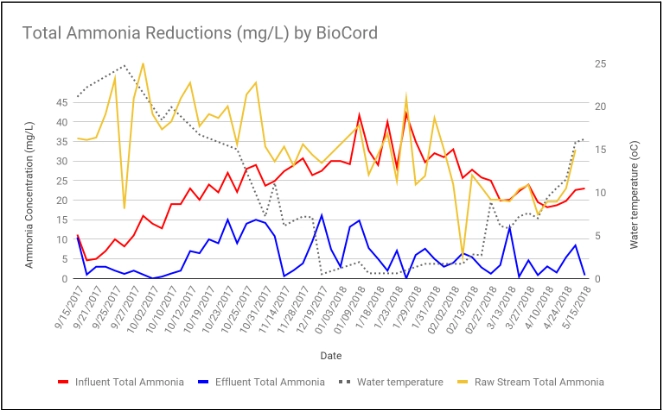
Responsive to nutrient loading, regardless of temperature
Another study, conducted over a two-year period in Dundalk, Ontario also reinforces the ability of the BioCord biofilm to thrive in cold water conditions. This study aimed to determine whether the relative abundance of nitrifying bacteria in the BioCord biofilm was affected by temperature or loading of nutrients.
The graph below shows that in each location where BioCord was installed (Cell 2 and 4 of the lagoon) there was no significant difference in the relative abundance of nitrifying bacteria in warm or cold water temperatures. Instead, higher relative abundance was seen in Cell 2, which experienced a higher concentration of ammonia than Cell 4. This result confirms that BioCord Reactors can establish a robust community of nitrifying bacteria regardless of temperature; however the relative abundance is affected by the availability of nutrients.
The analysis also revealed Candidatus nitrotoga as the dominant nitrite-oxidizing bacteria in the lagoon samples. This adaptable bacterium thrives in cold temperatures and under fluctuating conditions, suggesting the BioCord Reactors offer an ideal home to support this desirable nitrifier.
